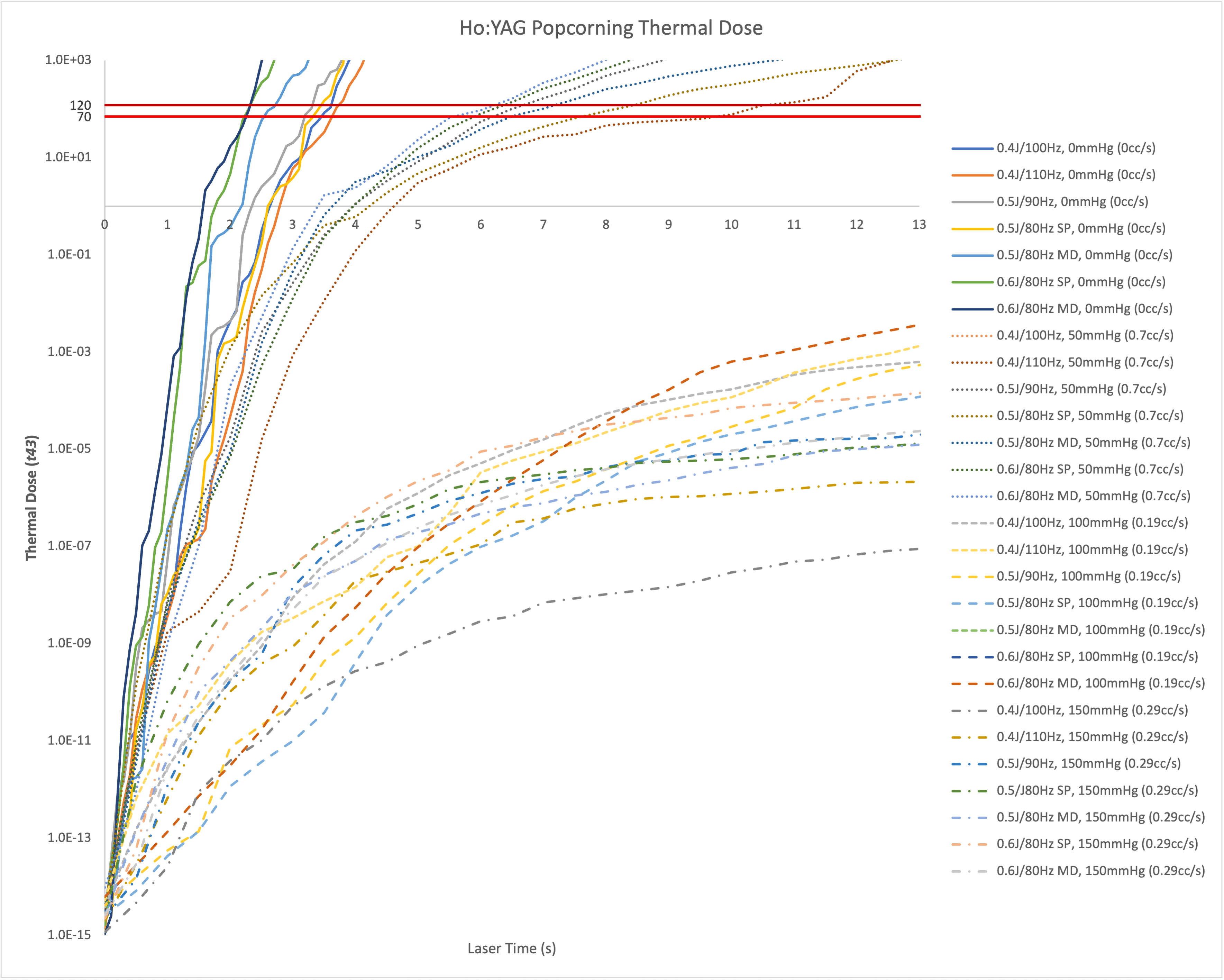Back
Poster, Podium & Video Sessions
Moderated Poster
MP05: Stone Disease: Basic Research & Pathophysiology
MP05-20: The Heat is On: Moses 2.0 Popcorning in a Novel Benchtop 3D Kidney Model Reaches Thermal Damage Thresholds Rapidly
Friday, May 13, 2022
8:45 AM – 10:00 AM
Location: Room 225
Zachary Dionise*, Christian Tabib, Sabrina Tran, Francois Soto-Palou, Pei Zhong, Glenn Preminger, Michael Lipkin, Durham, NC

Zachary Dionise, MD
Duke University Medical Center
Poster Presenter(s)
Introduction: Heat generation during laser lithotripsy increases with increasing power. With improved Ho:YAG laser technology, surgeons routinely operate with higher frequency, energy, and therefore power, increasing the potential for thermal injury. Though colleagues have examined temperatures during laser lithotripsy, most have used non-anatomic in vitro models and few have evaluated the extended frequency range of MosesTM 2.0. Our aim was to test, high-power popcorn laser settings in an anatomically accurate 3D kidney model to determine the time to thermal damage and cool down, as well as the effects irrigation flow rate has on dampening thermal dose.
Methods: A 3D-printed, anatomically accurate kidney model derived from CT images was submerged in room temperature water. Thermocouples were placed flush with the tip of a single-use ureteroscope and at the tissue-fluid interface of the model upper pole calyx 5mm from laser tip. Hard Begostone stone phantom fragments, similar physical properties of calcium oxalate monohydrate stones, were placed within the calyx to represent a popcorning scenario. The laser was fired for 30 seconds at increasing rates of room temperature irrigation (Figure) followed by a maximal flow (200mm Hg) ‘cool down’ period. If temperature increased to 60oC, lasering was terminated and ‘cool down’ initiated. Laser settings included: 0.4J/100Hz, 0.4J/110Hz, 0.5J/90Hz, 0.5 and 0.6J/80Hz using Short Pulse (SP) and Moses Distance (MD). Testing was performed in triplicate. Settings were compared by time to reach threshold thermal dose of tissues injury (t43 70 and 120 min), as well as cooldown to less than 43C, using two-sample t and ANOVA tests.
Results: Laser settings with higher power reached threshold thermal dose more quickly (Figure; p<0.01). Increasing flow rate slowed accumulation of tissue thermal dose substantially (p < 0.01). With 0mm and 50mmHg irrigation, threshold thermal dose for tissue injury was achieved rapidly, while at higher rates it was never approached (Figure).
Conclusions: High-powered lasers reach thermal injury thresholds rapidly on popcorn settings ( <3 seconds), exacerbated with no irrigation. However, even minimal irrigation significantly decreases time to reach these thresholds, which may allow increased laser versus cool down time during treatment.
Source of Funding: None

Methods: A 3D-printed, anatomically accurate kidney model derived from CT images was submerged in room temperature water. Thermocouples were placed flush with the tip of a single-use ureteroscope and at the tissue-fluid interface of the model upper pole calyx 5mm from laser tip. Hard Begostone stone phantom fragments, similar physical properties of calcium oxalate monohydrate stones, were placed within the calyx to represent a popcorning scenario. The laser was fired for 30 seconds at increasing rates of room temperature irrigation (Figure) followed by a maximal flow (200mm Hg) ‘cool down’ period. If temperature increased to 60oC, lasering was terminated and ‘cool down’ initiated. Laser settings included: 0.4J/100Hz, 0.4J/110Hz, 0.5J/90Hz, 0.5 and 0.6J/80Hz using Short Pulse (SP) and Moses Distance (MD). Testing was performed in triplicate. Settings were compared by time to reach threshold thermal dose of tissues injury (t43 70 and 120 min), as well as cooldown to less than 43C, using two-sample t and ANOVA tests.
Results: Laser settings with higher power reached threshold thermal dose more quickly (Figure; p<0.01). Increasing flow rate slowed accumulation of tissue thermal dose substantially (p < 0.01). With 0mm and 50mmHg irrigation, threshold thermal dose for tissue injury was achieved rapidly, while at higher rates it was never approached (Figure).
Conclusions: High-powered lasers reach thermal injury thresholds rapidly on popcorn settings ( <3 seconds), exacerbated with no irrigation. However, even minimal irrigation significantly decreases time to reach these thresholds, which may allow increased laser versus cool down time during treatment.
Source of Funding: None


.jpg)
.jpg)